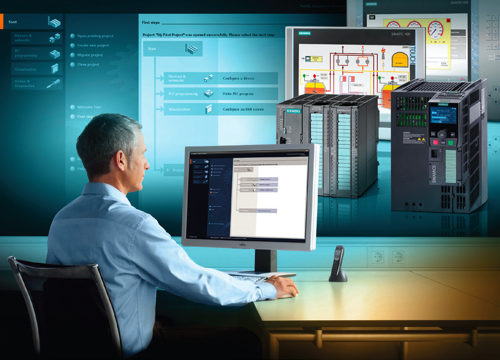A large number of manufacturers produce data acquisition hardware products for PCs. The largest market is for Microsoft Windows-based, PCI-bus and ISA-bus computers running Intel or compatible processors. For these machines, most data acquisition hardware products are cards that plug into a panel pc's expansion bus. Typically, the newest and fastest products are PCIbased. Many ISA-bus products are still available, but they are not recommended for new applications. ISA boards come in two major versions: 8-bit cards for PC/XT class computers and 16-bit cards for AT (ISA) machines.
Many products have additional hardware, external to the PC, which connects to the main data acquisition card. These add-on devices include connection boxes, signal conditioning boards, and high-power I/O interfaces, including relay boards. Some PC-based data acquisition systems consist of an external box connected to the PC's bus for control, usually via a special interface card.
Besides plug-in cards, there are now data acquisition hardware modules that connect to a PC via a USB port. These plug-and-play devices are very easy to install but are usually not high-performance products (having limited data transfer rates). Notebook PCs can also use data acquisition hardware via PCMCIA cards. In addition, some data acquisition products connect to a PC via a standard serial or parallel port.

Many data acquisition boards for PCs have dedicated functionality, such as only analog inputs. Some may have expansion capability, such as an additional multiplexer for more analog inputs. Other PC-based data acquisition cards are designed to be modular. They consist of a basic plug-in card, the carrier, which accepts several modules riding "piggy-back" on it. These modules offer specific functions, allowing the user to tailor the hardware to his or her particular needs (such as the number of analog inputs and outputs required). The module functions include analog I/O, digital I/O, and signal conditioning. This modular approach offers greater flexibility, at a higher price. It is usually justified when a highly customized system is required or configuration changes will occur often.
Data communications interface cards are also an important piece of data acquisition system hardware. In this case, the PC is used as an intelligent controller, running remote data acquisition equipment through the interface. These interfaces include GPIB, RS-232C, RS-422, and RS-485. Of course, these cards can also be used in PCs for communications purposes other than data acquisition. For example, even though a GPIB interface card is often used in a PC to control automated instruments, it could be used to simply drive a printer or plotter.
This concludes our examination of a few "real-world" examples of data acquisition systems based on PC platforms of various form factors. This field is constantly changing, with new products, standards, and approaches appearing continuously. Without any doubt, the field of PCs will continue to evolve at its typically frenetic pace. In the "Wintel" world, faster Pentium CPUs (and their successors) will continue to appear, along with newer and more sophisticated versions of Windows. Eventually, the PCI bus may become obsolete (as the ISA bus nearly has) and probably become relegated only to embedded and industrial applications. However, it should still be around for many years to come. Desktop PCs are likely to become black boxes without any internal expansion slots and rely solely on standard ports, such as USB and Fire Wire.
Industrial and embedded pc may become the platforms of choice for data acquisition systems because of their flexible hardware expansion capabilities. CompactPCI will probably become the leading embedded PC architecture. In the field of sensors, integrating more functions and "intelligence" in sensor units should continue. Growing acceptance of the IEEE 1451 standards will also help accelerate this trend. The increased use of electronic sensors in major consumer products, such as automobiles, will continue to drive the sensor field.
It is impossible to accurately predict future trends in the PC and data acquisition industry (as the predictions in the first edition of this book, 10 years ago, demonstrated). If you are putting together a PC-based data acquisition system, stick to your current requirements, with an eye on future needs. You should be aware of trends in the industry, but relying on new, untested technologies (or companies, for that matter) can be a big gamble. As a gross generalization, data acquisition hardware products and companies tend to have a much longer life than their software counterparts. Always try to first use current, established products to solve a problem. It will usually cost you less time, money, and frustration.